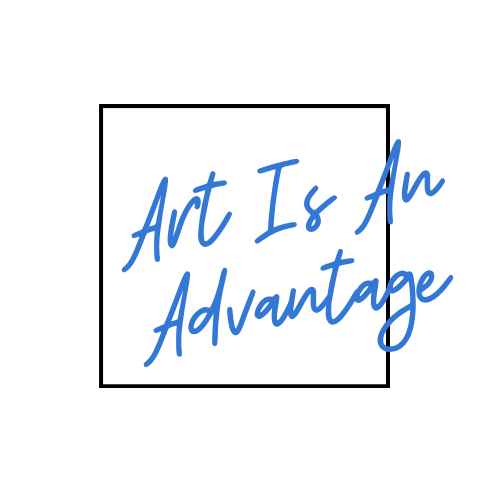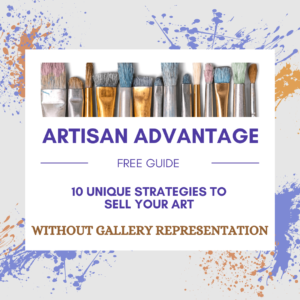
by Rebecca Sciullo | Dec 28, 2023 | Planning
The Importance of a Vision Statement
In Charting Your Art Business Progress, we discussed the importance of having a long-range vision for your art business. A vision statement serves as the compass that guides your journey within the realm of your art business. Your statement should cover your aspirations, values, and the ultimate destination you want to reach.
While creating a vision statement might seem difficult, it’s importantl to clarify the purpose and direction of your business. Here’s a short guide on writing a compelling vision statement.
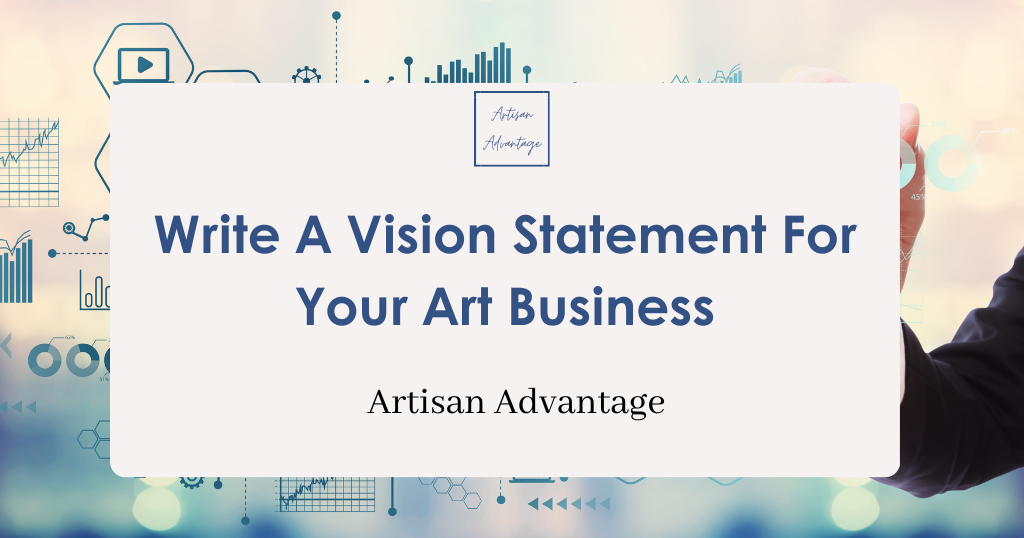
A Short Guide to Writing a Vision Statement for Your Art Business
1 – Reflect on Your Values
Consider the values that drive your art and your business. What principles are fundamental to your creative process? Whether it’s innovation, authenticity, social impact, or creative expression, outlining these values should be reflected in your vision.
2 – Define Long Term Goals
Envision where you want your art business to be in the future. Think about the impact you wish to make through your art, desired audience, market presence, or legacy you aim to leave behind. Describe a vivid picture of your ideal scenario.
3 – Be Specific Yet Inspirational
Your vision should be concise yet inspirational. Use clear language to express your aspirations. It should resonate with you, conveying a sense of purpose and passion.
4 – Consider Audience Connection
Reflect on how your art connects with your audience. Acknowledge the emotions, thoughts, or experiences you want to evoke in them through your work. Your vision statement should reflect this connection and the impact on your audience.
5 – Be Authentic
Your vision statement should authentically represent who you are as an artist. It should align with your artistic style, beliefs, and motivations. Authenticity lends credibility and helps establish a genuine connection with your audience.
6 – Be Flexible
While a vision statement serves as a guide, it’s essential to remain adaptable. Things will change over time with your art and the market. So, your vision statement should evolve with your growth and changing aspirations.
7 – Seek Feedback
While your vision statement does not need to be shared publicly, you could share it with a peer, mentor, or trusted friend. Feedback can offer valuable insights and help refine your statement to make it more impactful.
8 – Revise and Refine
Crafting a vision statement is a process. Revise and refine your statement until it feels authentic, inspiring, and aligned with your aspirations.
Your Business Roadmap
Your vision statement serves as a roadmap for your art business. This process guides you for decisions and actions that move you toward your ideal business or career.
For free resources, workshops and other information, join the Artisan Advantage weekly news drop here.
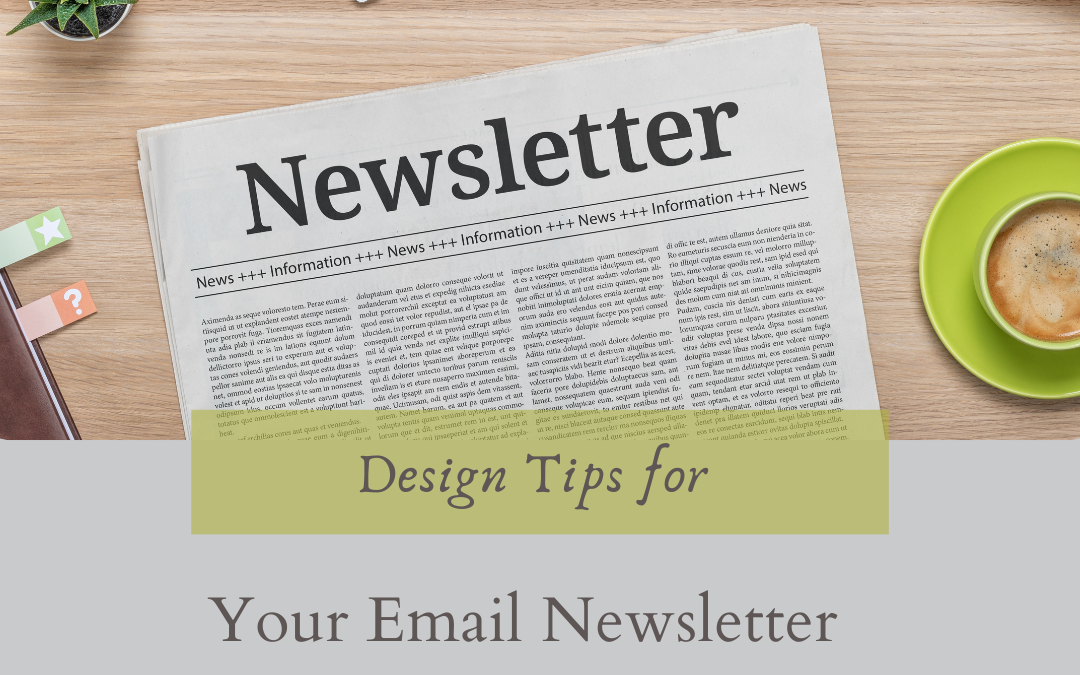
by Rebecca Sciullo | Nov 17, 2023 | Channels
Design tips for your artist newsletter’s template.
Now that we’ve covered the importance and how to set up a template for your email newsletters, it’s time to focus on the design. Designing an email newsletter template thoughtfully for your art business will showcase your creativity and engage your audience.
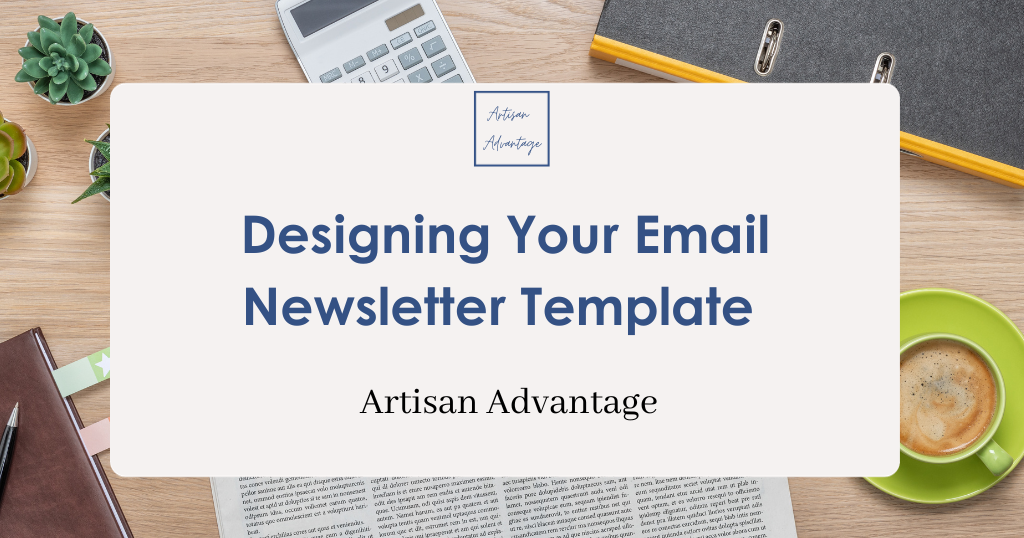
Here are some design tips to make your artist’s email newsletter visually appealing and effective:
Use an Eye-Catching Header
Start with a visually striking header that includes your business logo or a representative image of your artwork. Use a consistent color palette that aligns with your brand.
Set up a Clean Layout
Keep the layout clean and organized to make it easy for subscribers to navigate.
Using grids or sections, separate different types of content, such as featured artworks, updates, and calls to action.
Use High-Quality Images
Showcase your art with high-quality images. Use clear, well-lit photos that highlight the details of your work.
Use Branded Fonts
Choose fonts that align with your brand identity. Use a maximum of two or three fonts for consistency.
Ensure the text is legible and easily read, even on mobile devices.
Incorporate Engaging Colors
Integrate colors that reflect the mood and style of your artwork. Consistent color choices contribute to a cohesive brand image.
Experiment with contrasting colors to make essential elements, like call-to-action buttons, stand out.
Embrace Whitespace
Embrace whitespace to avoid a cluttered look. Whitespace helps your subscribers focus on your content without feeling overwhelmed.
Use padding and margins effectively to create a balanced design.
Make Sure You Use a Responsive Design
Ensure your email template is mobile-friendly. Many users check emails on their phones, so a responsive design is crucial for a positive user experience.
Add a Personal Touch
To add a personal touch to your newsletter, consider including a short artist’s note, behind-the-scenes glimpses, or anecdotes about your creative process.
Maintain Consistent Branding
Maintain a consistent look and feel across all your emails, building brand recognition and trust with your audience.
Use a Clear Call-to-Action (CTA)
Place a clear and compelling CTA button directing subscribers to your website, online store, or event. Use action-oriented language to encourage engagement.
Pulling it Together
Remember, creating a visually appealing and cohesive design that reflects your artistic style while effectively communicating with your audience is key. Feel free to experiment and tailor these tips to suit the unique personality of your art business.
Get Art Marketing Tips Delivered Weekly to Your Inbox
Join my weekly art marketing info drop here to get more assistance like this for your art business delivered to your inbox every week.
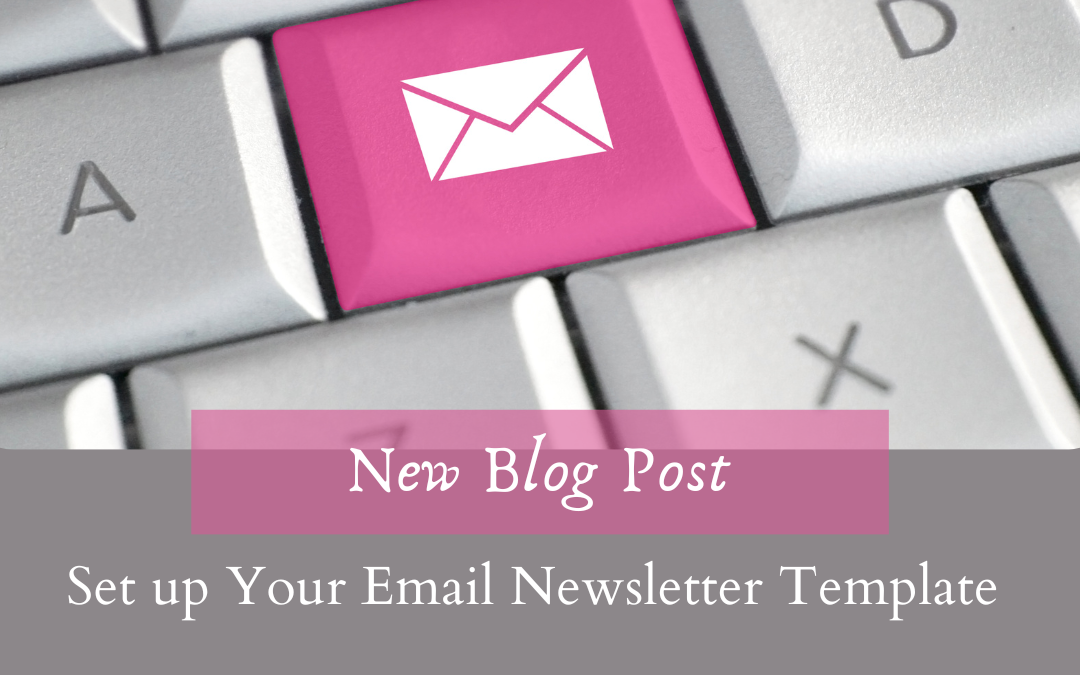
by Rebecca Sciullo | Nov 9, 2023 | Channels
Streamline Your Email Marketing – Set up A Template for Your Email Newsletter
When it comes to making your art business work, efficiency is key. One effective way to streamline your email marketing efforts is by setting up email templates. These templates save you time and ensure consistency in your branding and messaging. Here’s a step-by-step guide on how to create and set up email templates:
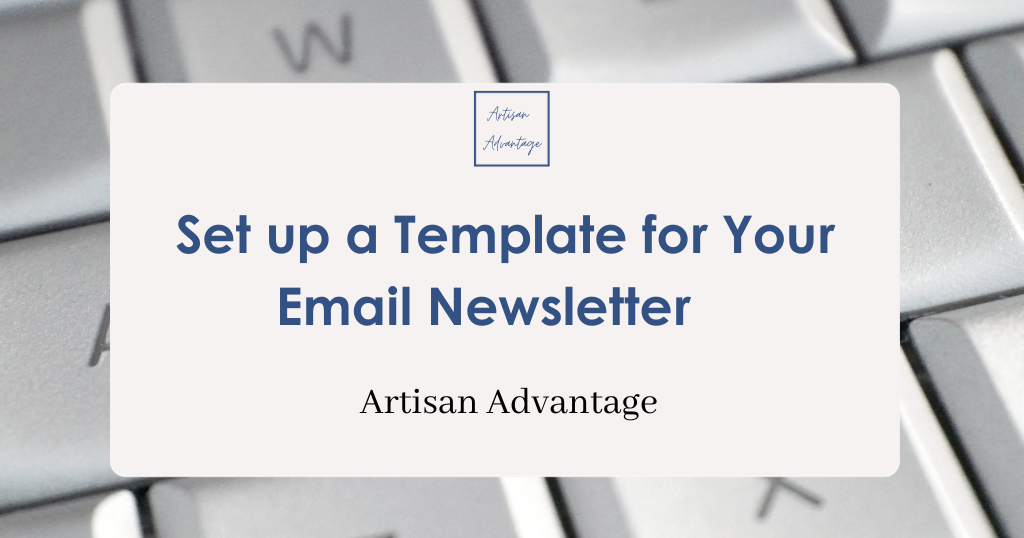
How to Set up a Template to Use in Your Art Businesses’ Email Marketing System
1 – Choose Your Email Marketing Platform
Start by selecting an email marketing platform that suits your needs. Popular options include Mailchimp, Constant Contact, and MailerLite.
2 – Access Template Options
Once logged into your chosen platform, navigate to the email template section. Most offer a variety of pre-designed templates or a blank canvas to start from scratch.
3 – Design Your Template
Customize your template to match your art style and aesthetics. Add your logo or name, choose a color scheme, and choose fonts that align with your brand identity. Make sure that your template is mobile-responsive for an easy user experience.
4 – Content Blocks
Divide your template into content blocks. Standard blocks include headers, subheadings, text, images, buttons, and footers. Arrange these blocks to create an appealing and coherent layout.
5 – Placeholder Text and Images
Use placeholder text and images to make it easier to swap in actual content for each email. This process saves time when creating new campaigns.
6 – Personalization
Many email marketing platforms let you personalize emails with recipient names or other dynamic content. Incorporate these elements into your template for a more engaging user experience.
7 – Testing
Before saving your template, test it to ensure everything looks and functions as intended across different devices and email clients.
8 – Save and Use
Once you’re satisfied with your template, save it for future use. The next time you create an email campaign, select your template as a starting point and you’ll be well on your way to crafting professional, on-brand emails in no time.
Incorporating email templates into your email marketing strategy is a smart move that will save you time, maintain consistency and enhance the overall impact of your email campaigns. So, set up those templates to keep your art marketing emails flowing.
Want to. Learn More?
Next week, I’ll post about design tips for your email newsletter.
Would you like more information to help with your art business AND invitations to free art marketing events? Join my weekly email newsletter here.
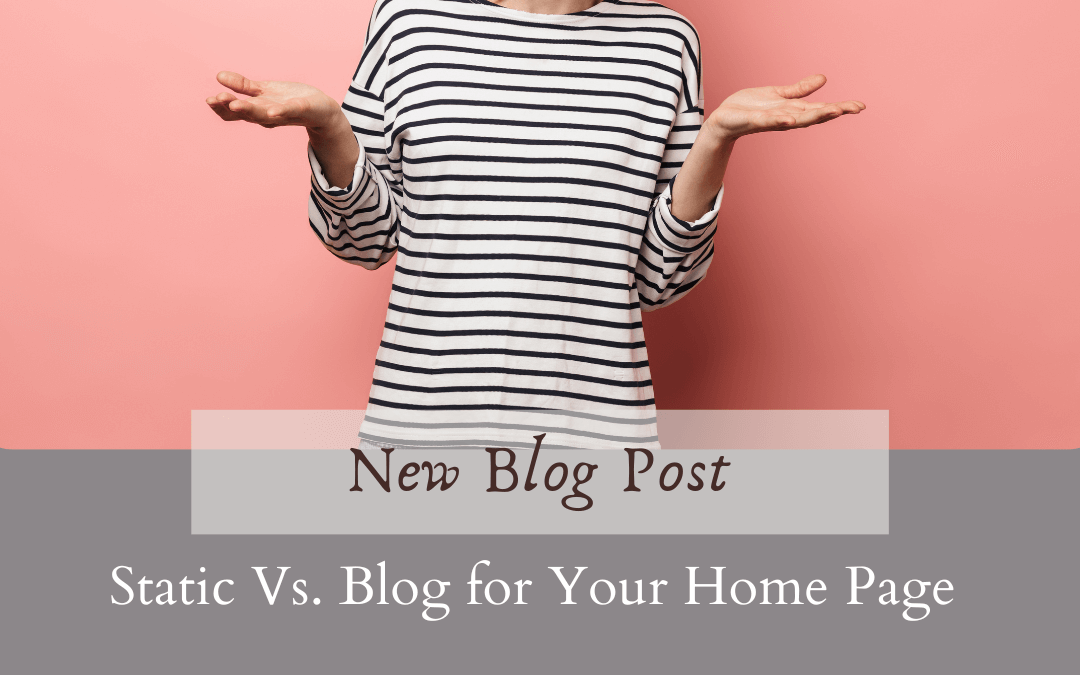
by Rebecca Sciullo | Nov 3, 2023 | Artist Websites, Your Hub
Choosing the Right Home Page for Your Website
Your website’s home page is like the front door to your online presence, and making a great first impression is important. If you’ve attended any of my art marketing programs, you know that I always encourage artists to add a blog page to their website. If you have a blog page on your site, you need to decide if it will serve as your home page or if you will use a static welcome page. For example, artist Robert Yonke uses his blog page as the home page on the WordPress.com platform. Or, using the same platform, artist Carolyn Haas has chosen a static page as her home page and her blog is found on “The Stories” page.
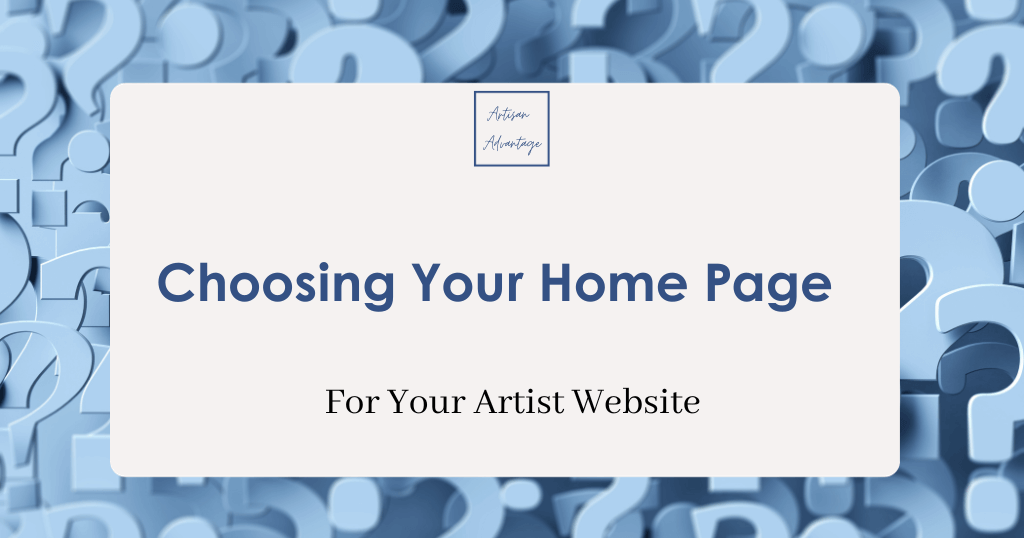
There’s no one-size-fits-all answer when deciding between a static page or a blog page for your website’s home page. It depends on your goals, content strategy, and audience. Let’s explore the advantages of both options:
Benefits of a Static Page as Your Home Page
Clear Brand Identity
A static home page can prominently display who you are as an artist and what you offer. It’s ideal for an artist looking to establish a strong online presence.
Focused Call to Action (CTA)
You can direct visitors’ attention to a single, prominent call-to-action (CTA). CTAs might include signing up for a newsletter, attending an event, or contacting you.
Timeless Content
A static page can offer content that doesn’t require frequent updates, making it a good choice for information that doesn’t change frequently.
Benefits of a Blog Page as Your Home Page
Fresh Content
A blog page showcases your website’s latest content, including new work, demonstrating that you are an active artist. And it also shows that your website is updated frequently, which can improve search engine rankings.
Engagement
Your blog offers an opportunity for interaction with your audience through comments and social sharing, fostering a sense of community.
Demonstrate Experience and Credibility
By showcasing new work, news, accolades, and projects, a blog helps to build credibility over time, which can grow your audience base and open up opportunities.
The Good News
The good news is that most website platforms allow you to switch between different page types easily.
Choosing between a static or blog page as your home page hinges on your website’s purpose. A static page may be the way to go if you prioritize a static, clear brand message and a focused CTA. However, a blog page is the better choice if you want to engage your audience with fresh content and build credibility regularly. Consider your goals, audience, and content strategy to determine which option aligns best with your website’s purpose and mission. If your strategy changes, you can always switch your home page.
Would you like more information to help with your art business AND invitations to free art marketing events? Join my weekly email newsletter here.
This post contains affiliate links which means I receive a small commission if you make a purchase using the link. For more information, see my full terms here.
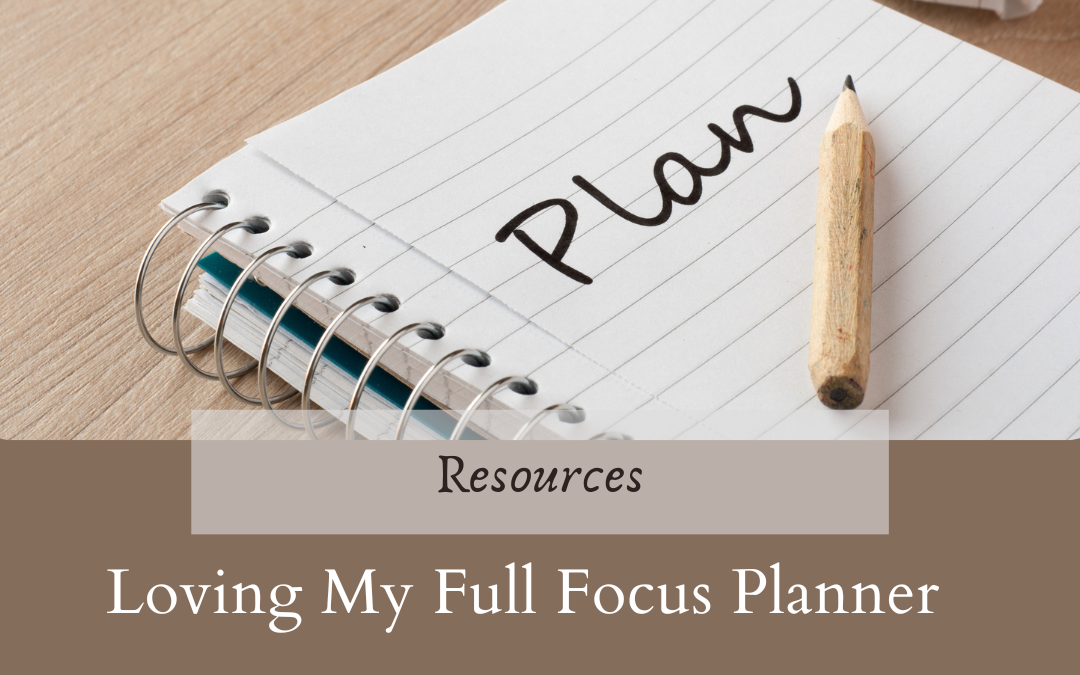
by Rebecca Sciullo | Nov 1, 2023 | Planning, Resources
Reviewing the Full Focus Planner by Michael Hyatt
It’s November 1st, so it is time to sit down and make my monthly 40-day plan. One tool that plays a big part in this plan is my Full Focus Planner by Michael Hyatt.
In the saturated world of productivity tools and planners, finding the right one to suit your needs can be overwhelming. I’ve tried everything from online tools to printed material. Over the years, some of the tools I’ve used have come and gone, but the one consistent product that keeps me on track is this planner—a comprehensive, goal-oriented planner designed to help you make the most of your time and achieve your goals.
While I use Google for my online calendar and Notion to keep my projects on track, the Full Focus Planner is my big-picture tool for planning my year, month, weeks, and days.
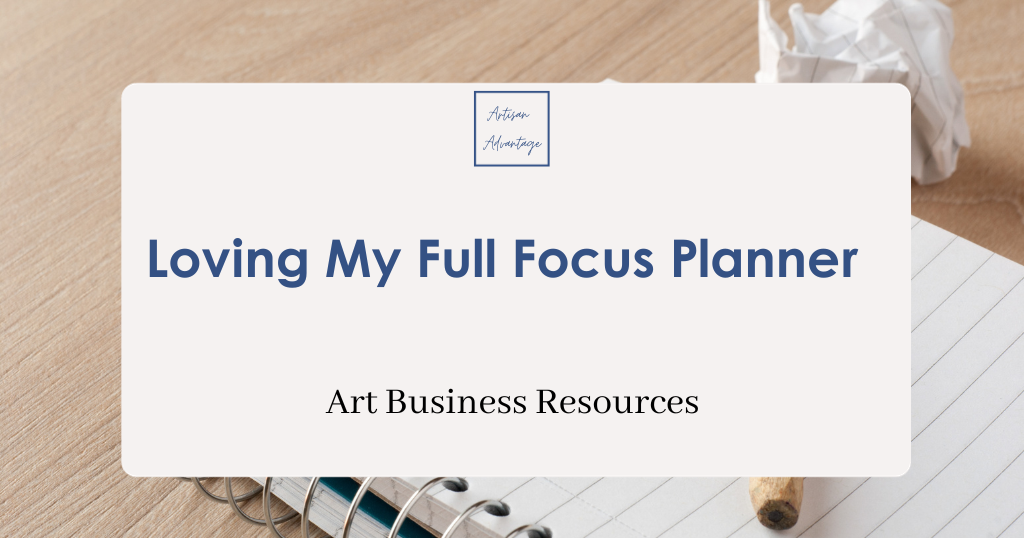
This post contains affiliate links which means I receive a small commission if you make a purchase using the link. For more information, see my full terms here.
Here’s a closer look at what makes this planner stand out.
Goal-Centered Approach
The Full Focus Planner is built around a goal-oriented framework, encouraging me to set clear objectives and break them down into manageable tasks. This focus on goal achievement is a standout feature.
Daily Rituals
The planner uses daily rituals to enhance productivity and mindfulness. Coaxing me into these daily rituals over time has promoted a balanced work-life dynamic. Daily rituals include one in the morning to set priorities and one in the evening for reflection and planning.
Quarterly Goal Setting
With the Full Focus Planner, you set and revisit your goals every quarter. This approach keeps you agile and adaptable, allowing you to adjust over time.
Built-in Time Blocking
Time blocking is seamlessly integrated into the planner, helping you allocate your time effectively and ensuring you stay on track throughout the day.
If you seek a tool to help you set, track, and achieve your goals with intention and accountability, Michael Hyatt’s Full Focus Planner is a great choice.
Get Your Planning Together for 2024 with this Guide
Would you like to put together a 12-month plan for your art business. Consider my Digital Guide to help you make your plan.

